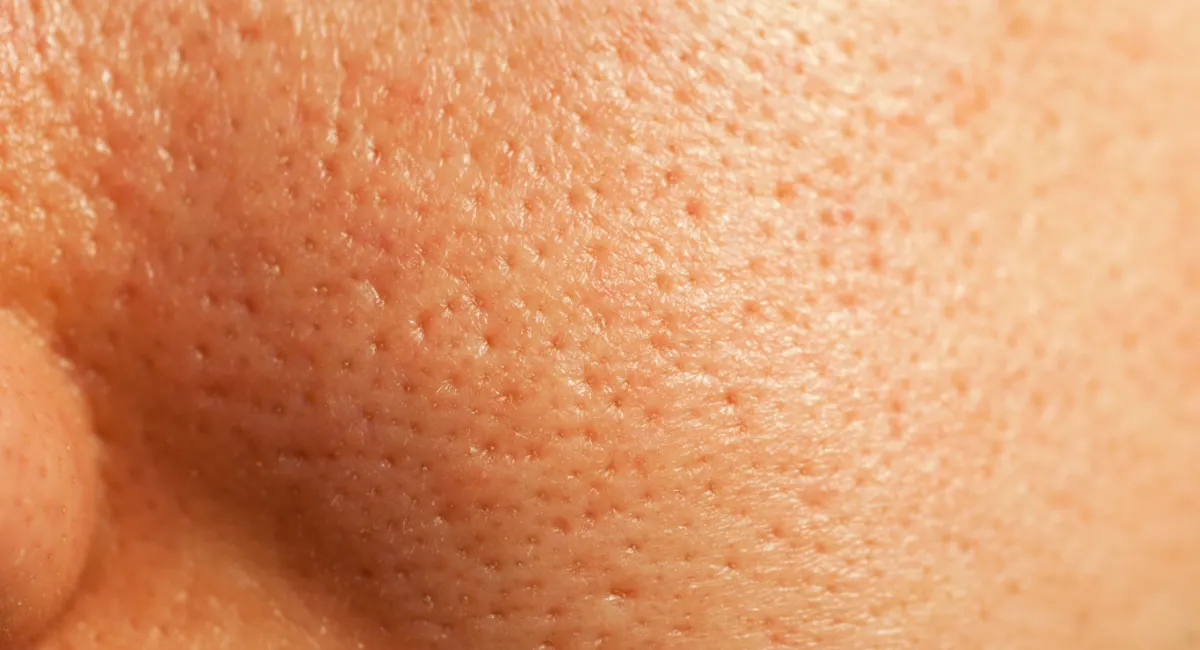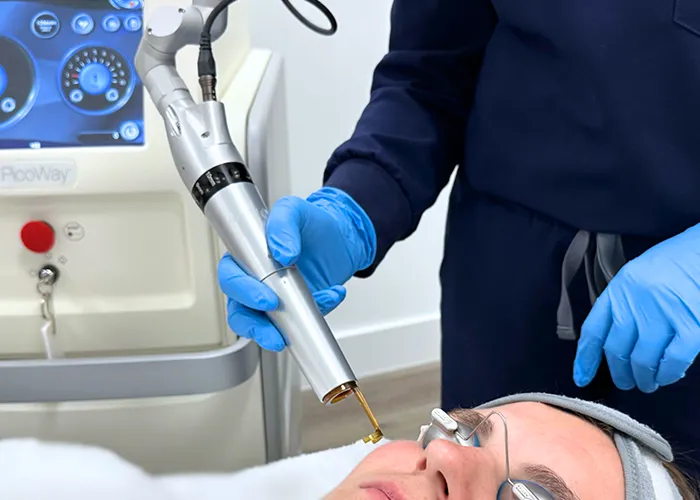
Dilated Pores
A blackhead and a dilated pore of Winer: what’s the difference?
Have you ever wondered about the difference between blackheads and dilated pores of Winer? The main thing is size – a dilated pore of Winer is basically a supersized blackhead. They both arise from clogged pores, and when air meets the trapped gunk, it gives that distinct black tint through oxidation.
Causes:
Book an Appointment-
Genetic Predisposition
Genetic factors play a role in determining skin characteristics, including pore size. Individuals with a family history of enlarged pores may be more predisposed to this condition. -
Excessive Sebum Production
Overproduction of sebum (skin oil) can lead to clogged pores. When excess oil mixes with dead skin cells and other debris, it can contribute to the dilation of pores. -
Hormonal Changes
Fluctuations in hormones, such as those occurring during puberty, pregnancy, or menopause, can influence sebum production and pore size. -
Aging and Reduced Elasticity
As individuals age, the skin loses collagen and elastin, leading to decreased skin elasticity. This loss of support structure can result in enlarged pores, especially in areas prone to oiliness. -
Sun Damage
Prolonged exposure to ultraviolet (UV) rays can damage collagen fibers in the skin. This damage contributes to a reduction in skin elasticity and may result in enlarged pores. -
Poor Skincare Habits
Inadequate cleansing and exfoliation can allow the accumulation of dead skin cells, oil, and debris, contributing to clogged pores and their subsequent dilation.
What solutions do we offer?

Picoway
PicoWay laser technology, is primarily known for its effectiveness in skin revitalization and pigment reduction but is not specifically designed for treating dilated pores.
Book an Appointment